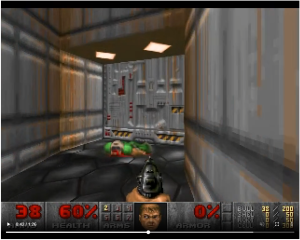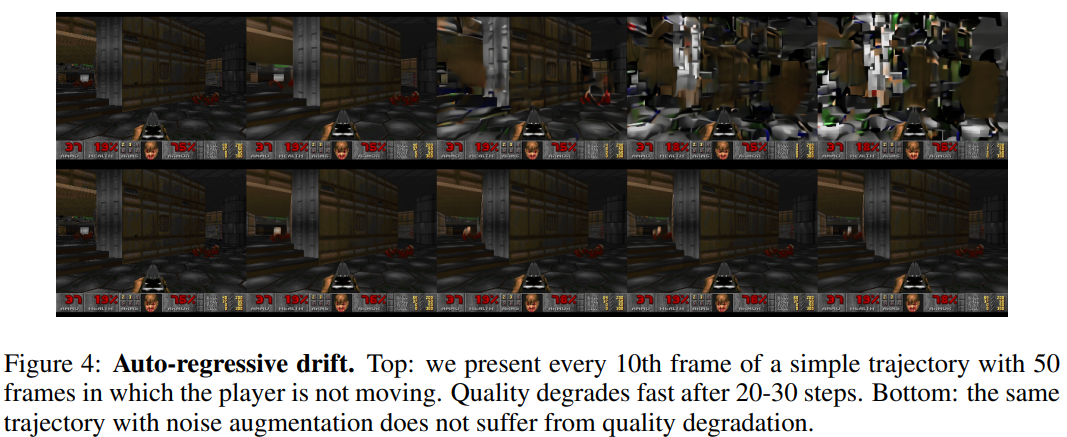Now AI can generate Doom without a game engine

Research scientists at Google have released a paper detailing how their artificial intelligence (AI) ‘GameNGen’ can create Doom-like gameplay on a neural network.
The scientists, Dani Valevski, Yaniv Leviathan, Moab Arar, and Shlomi Fruchter, paired Stable Diffusion, the image generation AI by Stability AI, with input detection, processes the previously generated frames, and produces new frames (and thus sections of gameplay/levels) that are cohesive from moment to moment.
This means you won’t be playing through actual levels of Doom on GameNGen. The model uses what it knows about Doom to create Doom-like levels, almost like fan-made mods do for other games. The model builds levels around the player in real-time as they are playing.
GameNGen’s Doom can be played like a ‘proper’ video game, with weapons and enemies and locked doors and health pick-ups, but it isn’t perfect. A featured clip shows Doom Guy jumping in some poison and his health sticking at 4% rather than dying. It’s still extremely impressive, and according to the paper, “Human raters are only slightly better than random chance at distinguishing short clips of the game from clips of the simulation.”
How did the GameNGen team get an AI to make Doom?AIs need huge quantities of data to make effective predictions and generate content that makes sense. The scientists acknowledged the impracticality of collecting enough gameplay data from human players to train their model, so the first thing they did was to train an AI agent to play Doom across all the difficulty levels, simulating a range of player skill levels to capture as complete a picture of Doom’s gameplay as possible.
 This image from the paper shows the difference between the new Gaussian noise loop and not using it. Image credit: Google
This image from the paper shows the difference between the new Gaussian noise loop and not using it. Image credit: Google
To work around the flaws in image generation that lead to accuracy and cohesion loss over time, the scientists trained new frames by feeding previous ones back in, along with user inputs, extending beyond typical single-frame prompts. They then corrupted these with Gaussian noise (a type of random, electrical noise) and used a separate network to fix those prompt frames. This ensured a self-correcting loop that meant gameplay could take place over much longer periods than without this method.
At present, the generator only has approximately three seconds of memory, so it doesn’t truly know what you did a minute ago.
This means things that need some kind of ongoing knowledge from the game, like owned keys, are hard to manage, and make for a critical barrier that scientists will continue to work to overcome.
Although still imperfect, GameNGen is an important step forward in AI-generated games and engines. Plus, it contributes to the vast genre of ‘someone put Doom on [blank]’, recently expanded to include ‘someone put Doom in Fortnite‘, a prestigious and growing body of lighthearted Doom clones.
Featured image credit: Google/id Software
The post Now AI can generate Doom without a game engine appeared first on ReadWrite.
